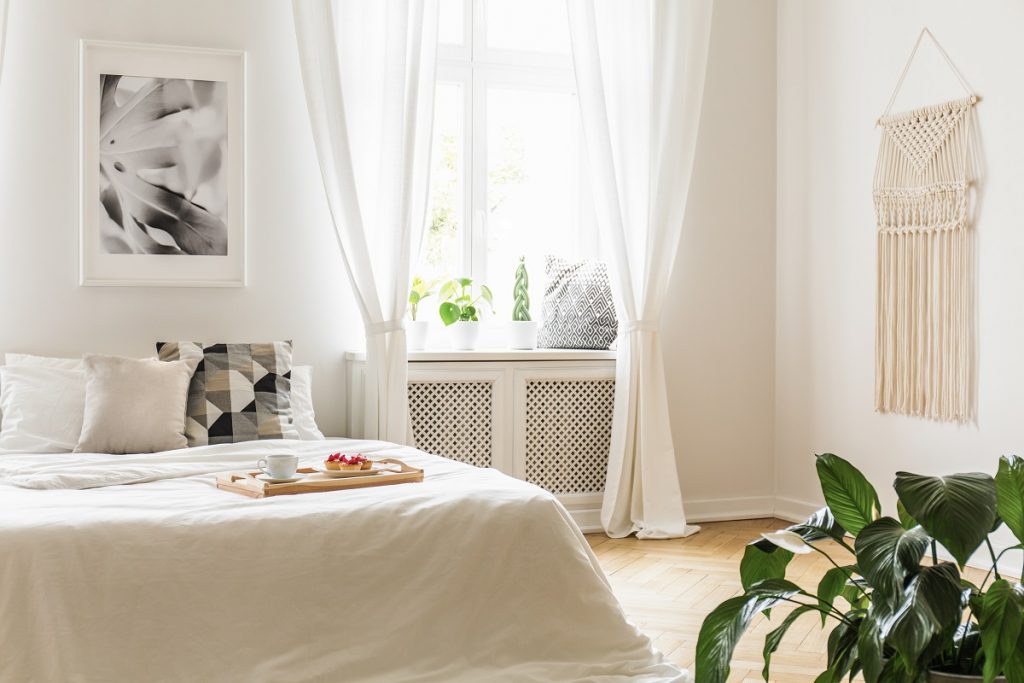When we talk about air pollution, we usually picture an outdoor space filled with smoke. However, indoor air can be more polluted and deadlier than outdoors. Something as simple as using polluting stoves for cooking or smoking indoors leads to a massive accumulation of pollutants in indoor air.
These pollutants can lead to numerous health problems. In fact, according to WHO, around four million people die prematurely every year due to illness attributed to household air pollution. Hence, it is essential to enhance indoor air quality to keep potential health problems at bay. Here are some easy and efficient ways to improve indoor air quality.
1. Maintaining the HVAC system
This might come as a surprise, but running the AC can reduce indoor air pollution. When you run the AC, it pulls the air from your house and pumps it back through a filter. This filter can trap pollutant residues. However, if you let the residues accumulate, the filter becomes less effective. Hence, along with regularly using your AC, you also need to ensure timely duct cleaning.
With timely maintenance and regular usage, your HVAC system can act as an air purifier and improve your home’s air quality.
2. Increasing ventilation
The best way to reduce pollutants is by not letting them accumulate. Increasing ventilation is one of the cheapest ways to get this done. All you need to do is open your windows for at least 10 minutes a day. This will get the air flowing, and in the process, the pollution-rich air will leave the house, thereby hindering the accumulation of pollutants.
Besides opening the windows, there are several other ways to increase ventilation. For instance, you can use an exhaust fan in your bathroom and kitchen, place fans close to windows, and prevent congestion for ventilation.
3. Using indoor plants

You would have already heard the benefits of plants and trees in improving air quality. Why not apply it indoors? Many houseplants can naturally filter out several volatile compounds that can be hazardous to our health.
Spider Plant is a great example that can efficiently reduce some of the most toxic gases such as carbon monoxide, nitrogen dioxide, and formaldehyde. Similarly, other houseplants such as Peace Lily, Lady Palm, Areca Palm, and Money Plant are also efficient at keeping the toxics outdoors and purifying indoor air.
4. Keeping your pets groomed
Dander, the skin cells of a pet, can be found almost everywhere in a house with a pet. When you breathe in the dander, it can lead to asthma-like symptoms. Besides the dander, you can also get allergic to your pet’s saliva, dead skin cells, and feces.
The best way to get rid of allergens from a pet is by keeping them groomed. Other ways to prevent air pollution and health issues due to pet allergens are brushing them outside the house, cleaning the floors regularly, and avoiding bringing them into your bedroom.
5. Minimizing the harm of VOCs
VOCs, or volatile organic compounds, are gases that contain highly toxic substances such as benzene, acetaldehyde, and formaldehyde. Paints, glues, and furniture can release a high amount of VOCs. Of course, you cannot eliminate all these things from your house, but there are ways to minimize the release of the gases. For instance, there are low VOC paints available that you can use to color your house.
If you buy new furniture, you can keep it in a garage or spare room for a week before using it. It will also help if you keep the windows of the extra room open for as long as possible. This will allow the VOCs to escape outside and prevent accumulation inside the house.
6. Avoiding smoking indoors

Cigarettes can release highly toxic substances into the air. These pollutants can lead to numerous respiratory problems and prove to be fatal. Harmful chemicals released due to second-hand smoking can remain in the air for hours. Thus, it can increase the risk of illness and respiratory health problems of all your family members, especially the children.
It is best to keep smokers outside your house. You can ask the smokers politely to keep the house smoke-free and head outdoors to light up a cigarette.
Multiple sources can lead to polluted indoor air. Hence, it is essential to make all the possible efforts to improve air quality. If you think that using air freshener and air purifiers will help, think again. Most fresheners and cleaners release chemicals to purify the air, which is equally harmful to your well-being. Consider all the natural ways to detoxify your home’s indoor air and ensure that your family stays free from all household air pollution-related health issues.
